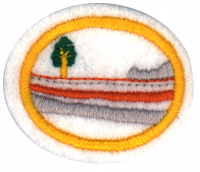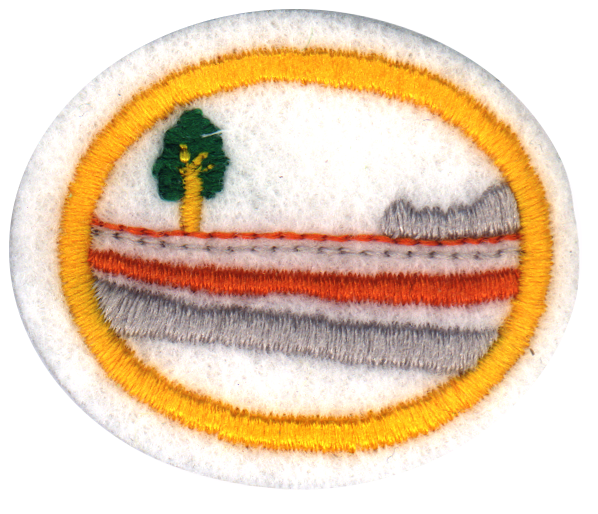Difference between revisions of "AY Honors/Soils/Answer Key/es"
From Pathfinder Wiki
(Created page with "{{clear}}") |
(Updating to match new version of source page) |
||
| (5 intermediate revisions by 2 users not shown) | |||
| Line 1: | Line 1: | ||
{{HonorSubpage}} | {{HonorSubpage}} | ||
| − | <section begin="Body" /> | + | <section begin="Body" /> |
{{ansreq|page={{#titleparts:{{PAGENAME}}|2|1}}|num=1}} | {{ansreq|page={{#titleparts:{{PAGENAME}}|2|1}}|num=1}} | ||
<noinclude></noinclude> | <noinclude></noinclude> | ||
| Line 86: | Line 86: | ||
{{CloseReq}} <!-- 6a --> | {{CloseReq}} <!-- 6a --> | ||
{{ansreq|page={{#titleparts:{{PAGENAME}}|2|1}}|num=6b}} <!--T:12--> | {{ansreq|page={{#titleparts:{{PAGENAME}}|2|1}}|num=6b}} <!--T:12--> | ||
| − | <noinclude> | + | <noinclude></noinclude> |
| − | </noinclude | ||
| − | |||
| − | |||
{{clear}} | {{clear}} | ||
| Line 96: | Line 93: | ||
{{CloseReq}} <!-- 6b --> | {{CloseReq}} <!-- 6b --> | ||
{{ansreq|page={{#titleparts:{{PAGENAME}}|2|1}}|num=6c}} <!--T:14--> | {{ansreq|page={{#titleparts:{{PAGENAME}}|2|1}}|num=6c}} <!--T:14--> | ||
| − | <noinclude> | + | <noinclude></noinclude> |
| − | </noinclude | ||
| − | |||
| − | |||
{{clear}} | {{clear}} | ||
| Line 111: | Line 105: | ||
{{CloseReq}} <!-- 6 --> | {{CloseReq}} <!-- 6 --> | ||
{{ansreq|page={{#titleparts:{{PAGENAME}}|2|1}}|num=7}} | {{ansreq|page={{#titleparts:{{PAGENAME}}|2|1}}|num=7}} | ||
| − | <noinclude> | + | <noinclude></noinclude> |
| − | </noinclude> | + | <!-- 7. Examinar una sección vertical de 2 pies (0.7 m) de suelo. Etiquetar las diferentes clases de materia orgánica en cuestión encontrada, identificar los diferentes horizontes de suelo y marcar la transición de la capa orgánica a la capa mineral. --> |
| − | <!-- 7. | ||
| − | |||
| − | |||
{{clear}} | {{clear}} | ||
| Line 128: | Line 119: | ||
{{CloseReq}} <!-- 7 --> | {{CloseReq}} <!-- 7 --> | ||
{{ansreq|page={{#titleparts:{{PAGENAME}}|2|1}}|num=8}} | {{ansreq|page={{#titleparts:{{PAGENAME}}|2|1}}|num=8}} | ||
| − | <noinclude> | + | <noinclude></noinclude> |
| − | </noinclude> | + | <!-- 8. Dibujar, fotografiar o recopilar y etiquetar correctamente los cinco diferentes tipos de suelo. --> |
| − | <!-- 8. | ||
| − | |||
| − | |||
| − | |||
| − | |||
| − | |||
| − | |||
{{clear}} | {{clear}} | ||
| Line 150: | Line 134: | ||
<noinclude></noinclude> | <noinclude></noinclude> | ||
==Referencias== | ==Referencias== | ||
| − | |||
<noinclude></noinclude> | <noinclude></noinclude> | ||
| + | |||
| + | [[Category:Adventist Youth Honors Answer Book/Do at home{{GetLangSuffix}}]] | ||
{{CloseHonorPage}} | {{CloseHonorPage}} | ||
Latest revision as of 17:46, 3 January 2023
Suelos y terrenos
Nivel de destreza
1
Año
2006
Version
21.12.2025
Autoridad de aprobación
Asociación General
1
Definir qué significa el «suelo».
2
¿Dónde en la tierra se encuentran todos los suelos?
3
¿Cuáles son los cinco factores claves en la formación del suelo?
4
Definir los siguientes términos:
4a
Horizonte A
4b
Horizonte B
4c
Horizonte C
4d
Capa orgánica
4e
Capa mineral
4f
Arcilla
4g
Lixiviacióm
4h
Sílice
4i
Humus/Mantillo
4j
Perfil de suelo
4k
Material de los padres
4l
Pedólogo
5
Definir el término «clasificación de suelos».
6
Discutir las diferencias entre las tres siguientes clases de suelo:
6a
Desérticos
6b
Templados
6c
Tropicales
7
Examinar una sección vertical de 2 pies (0.7 m) de suelo. Etiquetar las diferentes clases de materia orgánica en cuestión encontrada, identificar los diferentes horizontes de suelo y marcar la transición de la capa orgánica a la capa mineral.
8
Dibujar, fotografiar o recopilar y etiquetar correctamente los cinco diferentes tipos de suelo.


